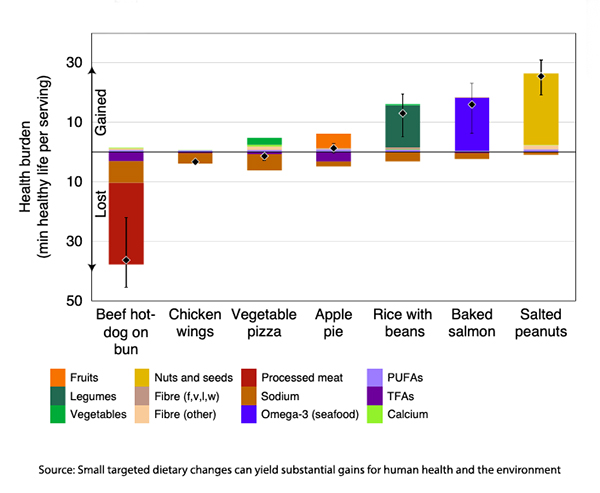
Inhaling hot gases of combustion is considered an occupational health hazard by the Occupational Safety and Health Administration (OSHA), at least for firefighters who wear protective gear. It is troubling—and somewhat puzzling—that roughly 11% of adult Americans continue to voluntarily inhale the hot gases of combustion in smoking tobacco, not to mention those now inhaling hot gases from burning weed.
For both physicians and patients, the endless refrain of “smoking is bad for you” can become tiresome and ineffective. Finding a way to grab a patient’s attention requires moving beyond these repetitive warnings. A recent editorial in the journal Addiction made the claim,
“…the average loss of life per cigarette smoked, which is approximately 20 minutes:
17 for men and 22 for women.”
The alchemy employed by the mathmagicians is straightforward:
The original calculation began with a loss of 6.5 years of life for a smoker who smoked an estimated 15.8 cigarettes daily for 54 years. [1]
- 5,772 cigarettes per year for 54 years of smoking = 311,688 cigarettes
- 6.5 years is equivalent to 3,418,560 minutes
- 3,418,560 minutes of life lost to smoking / 311,688 cigarettes = 11 minutes per cigarette
The higher figure in the recent editorial is because those original estimates have been updated. Smokers now are losing 10 years of life in the case of men and 11 years in the case of women.
Researchers express “alchemic” puzzlement over how the “average daily cigarette consumption has reduced from 15.8 to 11.5 per day for men and from 13.6 to 9.5 per day for women,” yet life expectancy per cigarette has increased. They consider whether “smokers nowadays smoke each cigarette more intensively,” for which there is some evidence when considering the reduction in nicotine in some brands – a hallmark of addiction is to need the same or greater dose of the drug to obtain the same effect.
They go on to say that this doesn’t seem to be the case. When they looked at cotinine, a metabolite of nicotine found in the saliva of smokers, those levels “show only a modest change in cotinine concentration per cigarette as cigarette consumption has declined.” Along the way, though, they did show a crack in the tobacco prohibitionists’ armor,
“Nicotine itself is not particularly harmful, but it can serve as a surrogate marker for exposure to tar and other harmful compounds.” [emphasis added]
They also explore whether the years lost occur during a period people generally consider themselves “healthy” or later when the cumulative effects of smoking manifest as respiratory and cardiac disabilities. Essentially, does smoking shorten the healthy years of life or extend the period of morbidity? The researchers cite a meta-analysis finding “the effect smoking has on the absolute number of unhealthy life years,” inconsistent with half the studies showing an expansion of morbidity, e.g., more years spent disabled.
The opinion piece ends with this dramatic metaphor.
“Stopping smoking at every age is beneficial, but the sooner smokers get off this escalator of death the longer and healthier they can expect their lives to be.”
These measures of time lost from unhealthy behaviors are not limited to cigarettes. Given that this is the time of year when many of us think of a better diet, a study quantifies the time lost or gained from various foods. Once again, researchers made use of estimates of food consumption as well as population mortalities to mathmagically quantify our time lost from eating “dietary risk factors,” e.g., milk, nuts, omega-3, fiber, sugar-sweetened beverages, processed meats, red meats, etc.
This study involved more mathematically complicated modeling – micro losses of healthy life were calculated for each gram of the 15 indexed dietary risk factors, and each was weighted against the general composition of the foods we eat and then presented as a “Health Nutritional Index. The health burden attributable to a given food or mixed dish.”
 The graph shows the harmful impact of hotdogs (that Joey Chestnut is alive must be a tribute to medical care) and the beneficial effects of peanuts despite their being salted.
The graph shows the harmful impact of hotdogs (that Joey Chestnut is alive must be a tribute to medical care) and the beneficial effects of peanuts despite their being salted.
A “frankfurter sandwich” stole 35 minutes, while a peanut butter and jelly sandwich added 33 minutes. [2] Hamburgers will cost you 6 minutes; pizza costs 3.6 minutes; Yogurt only shaves 3 seconds off your life. Foods that can extend your life, at least by the research calculations, include candy, adding close to a half-minute; vegetables, adding nearly 3 minutes; fruits, adding 11; and oddly enough, ready-to-eat cereal, which adds almost 4 minutes to your life. (They evidently did not get the latest Internet memo on the harms of food coloring) You can find a longer list here.
If smoking is the “escalator of death,” then diet could be considered the “culinary seesaw of life,” swinging between a 6-minute hamburger life tax and an 11-minute fruit boost. While these calculations suggest a constant negotiation with our collective life clock, their real purpose is to prompt a shift in perspective—enough to encourage healthier choices. Ultimately, no one gets out alive, and we all have potential risks or diseases. The next time you ponder whether to light up or chow down, remember that each decision matters, if just by a bit, in the length and quality of your life. For me, the enjoyment of lighting up is not worth the cost; on the other hand, 15 minutes with pizza is worth the 7.2-minute loss.
[1] The more common description for smoking is pack-years, the number of packs smoked in a year. This would equal roughly 45 pack years.
[2] I do not think the foods are necessarily additive. Having a PB&J and a hot dog will not result in losing only 2 minutes of life.



